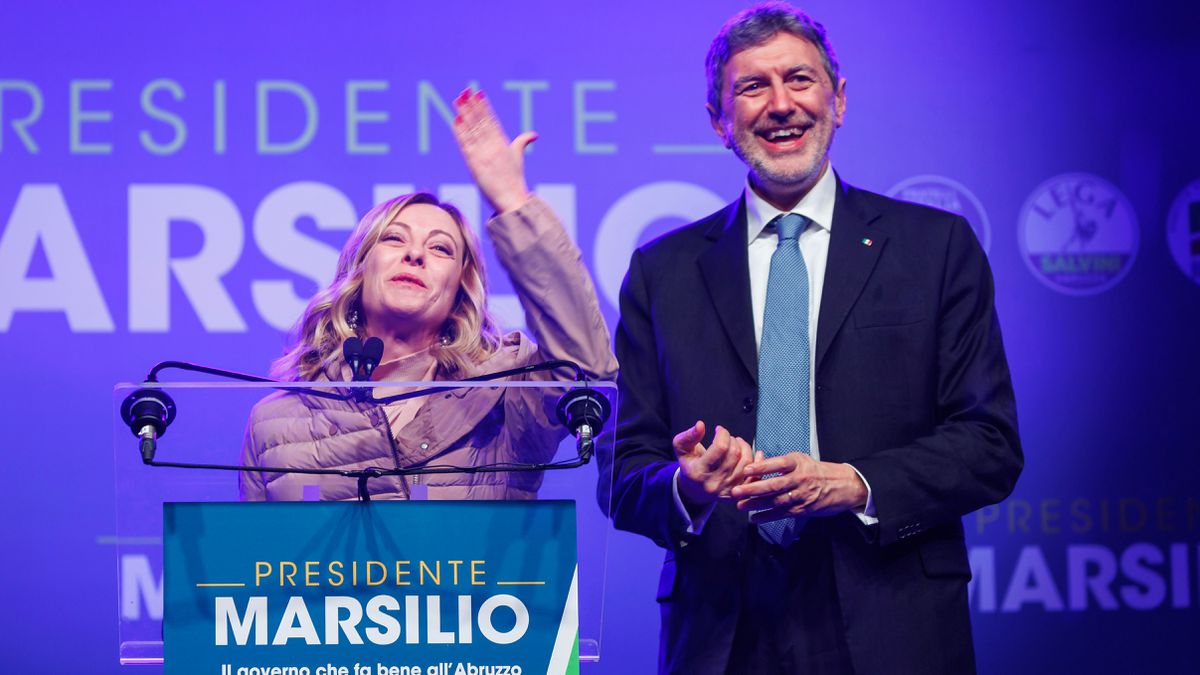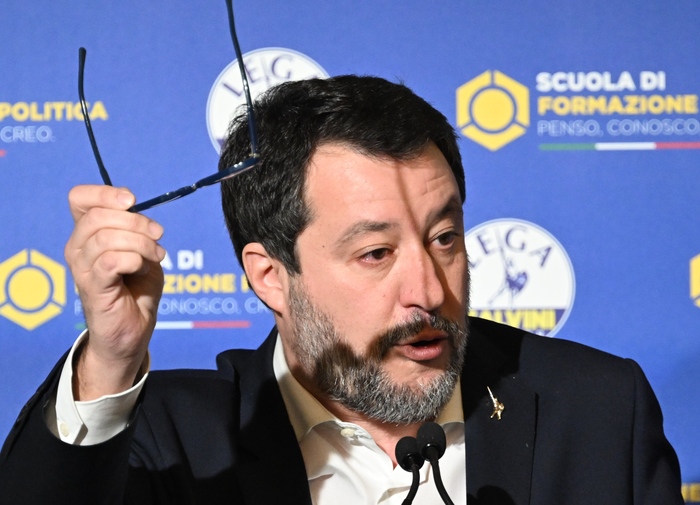what is chosen
Next Sunday Italy elects the 👉 400 deputies of the Chamber and the 200 senators of the Senate, a third less than those elected in the previous elections.
Two years ago, a constitutional referendum approved the cutback of Parliament in a context of political disaffection in a country that practically goes to government every year (67 executives in the last 76 years).
The deputies and senators will choose the successor of Mario Draghi at the head of the Council of Ministers.
It is a position for which the polls point to Giorgia Meloni, the leader of the Brothers of Italy, a neo-fascist party that aspires to win Sunday's elections with up to 25% of the vote.
Who is running, and why are they in a coalition?
The right has agreed to form a grand coalition.
That they present themselves together is relevant, because the current electoral system favors coalitions agreed upon before the elections.
Why?
Because about a third of the seats (37%) are settled in territorial divisions called single-member associations.
There are 147 sections in which the deputies are appointed by a majority system: only one candidate is elected, the most voted, hence the uninominal.
The negotiations between Meloni, Mateo Salvini (Liga) and Silvio Berlusconi (Forza Italia) have given rise to the most right-wing coalition in the republican history of Italy.
The three parties present common candidates, so all the votes from the right will presumably go to the candidate that has been decided in this alliance, while those from the left will be scattered among the different suitors.
Thus, it is very likely that the Meloni-Salvini-Berlusconi axis will win the majority of these seats (it is estimated that up to 90%).
The triad has also agreed that, if it prevails at the polls, the party with the most votes will be the one to propose the prime minister.
Opposing the right-wing coalition is the fragmented left, headed by former Prime Minister Enrico Letta, of the Democratic Party (PD).
Letta leads a small coalition made up of a large number of parties, which has not agreed to join forces with the 5-Star Movement, due to the role of this anti-system party in the fall of the Draghi government.
The M5S won the last elections, but the mutations and the split of a hundred parliamentarians threaten its survival.
The rest of the seats, the other two thirds (63%), are chosen according to a proportional system: the votes that the parties have obtained throughout the national territory are counted and the resulting percentages are applied in the distribution of seats that correspond to each constituency.
A small quota of parliamentarians is set aside to be elected by residents abroad.
How Italians choose
The voter will find two ballots, a pink one in which he will elect his representatives for the Chamber of Deputies, and a yellow one in which he will do the same for the Senate of the Republic.
The form of election is similar between the two, they simply change the number of parliamentarians and the territorial scope in which the seats are distributed.
Voters have two decisions to make.
On the one hand, which candidate is chosen for the uninominal college (the one governed by the majority system).
On the other hand, which party is chosen for the national vote.
With the pen and the ballot paper in hand, three options are presented to the voter.
You can mark only the logo of a party.
The list presented by the formation is counted as one vote.
It is also computed as a vote for the candidate for the uninominal college.
The paradox may arise that the candidate that the party supports is not a politician of its formation, due to the distribution that has been made in the coalition negotiation.
You can mark only the name of the candidate.
In that case, his vote is extended to the party that presents him, or is distributed proportionally among the coalition groups that support him.
You can mark the name of a candidate and the name of a party.
Voting must be consistent: it is not allowed to distribute the vote by choosing a candidate and a party that does not support it: in this case, it is considered a null vote.
Government formation
This is the first time since 1919 that the transalpine country will vote in the fall, as a result of the early elections.
If the right-wing coalition obtains good results, as expected, the job will be made easier for the President of the Republic, Sergio Mattarella, who is in charge of sounding out the political groups until he finds a candidate to commission the formation of the Government.
The chosen one needs to obtain the trust of the parliamentarians in the Chamber of Deputies and in the Senate, due to a bicameral system that, in reality, generates blockages and instability such as those that have led this time to early elections.
These are the results of the last elections.
The formation of coalition governments has not traditionally been an obstacle for Italian parties.
The difficult part has been maintaining Parliament's confidence for more than a year.
Follow all the international information on
and
, or in
our weekly newsletter
.




/cloudfront-eu-central-1.images.arcpublishing.com/prisa/72P5ZYTEFHLNFRHZVR6CRUERCU.jpg)




